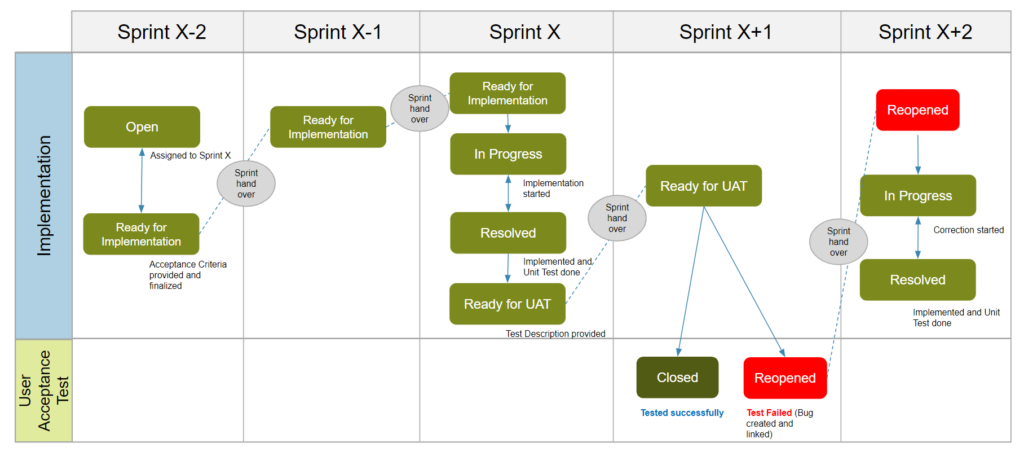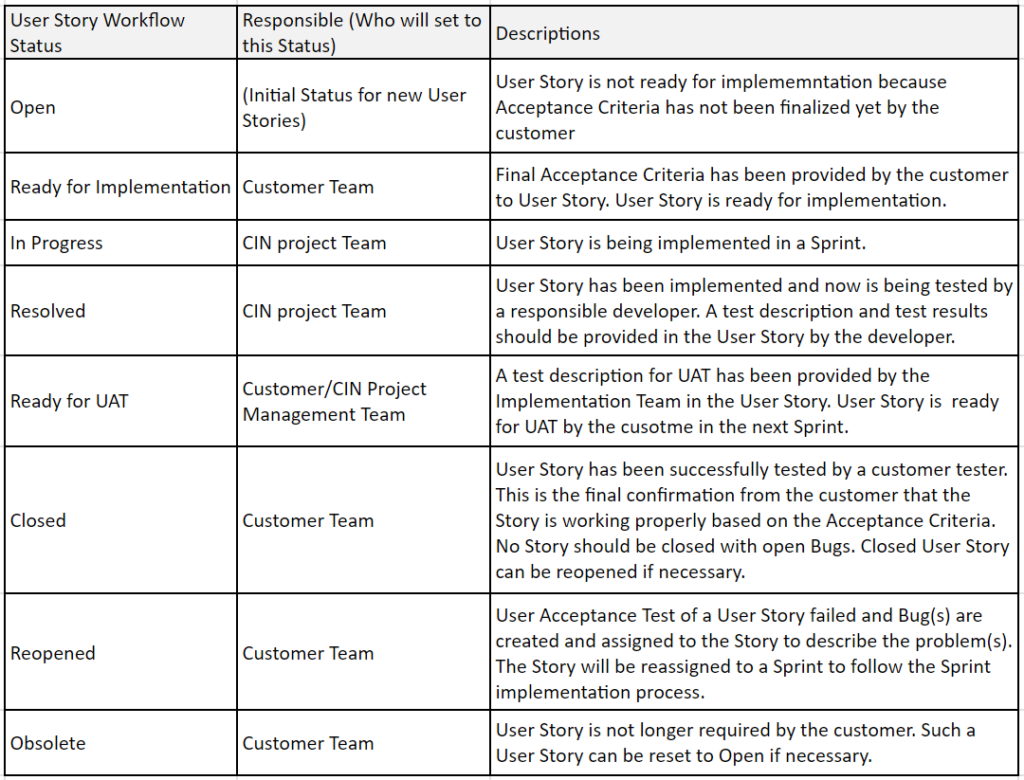CIN Methodology ensures clear project planning, timely execution and high transparency to the project members. Our knowledge and experiences make project timeline predictable, minimize project risks, and optimize costs.
It offers an end-to-end process from project initiation, discovery, to project execution and handover to the customer.
Discovery Phase
Discovery phase focuses on defining the scope of the project and finalizing it in User Stories through Discovery Workshop
Workshops
- Discovery Workshops are organized together with customer business teams
-
Architecture workshop is required in parallel based on business requirements and capabilities and needed products and services
User Story
- User Story is a core entity in the project to specify the scope from business perspective and should be implementable as well as verifiable
- Customer creates User Stories with description and acceptance criteria which is basis for User Acceptance Test later
- Effort estimation is made with Story Points in each User Story
- User Stories are prioritized to Sprint assignment for efficient implementation
-
Get the sign-off by customer
Project Management System
- Track the progress of the workshops in the system
- Manage prioritization of project backlog together with customer
- Make planning and execution status fully transparent to all project members
Create binding offer
- Offer is a Fixed Price project based on story points
- Flexibility on User Stories based on story points
Customer can decide during the Implementation phase to descope stories and bring new features in scope
Deliverables of Discovery Phase
- Target Architecture
- Project Backlog in User Stories with priority
- Project Setup
- Sprint Plan
Implementation Phase
After finalizing the scope of the project in User Stories, including description, acceptance criteria and planned efforts in Story Points, we start the implementation of the project.
We execute Implementation phase with Sprints. Each Sprint has a two weeks’ cycle for both implementation if User Stories and verification of implemented User Stories (User Acceptance Test).
Deliverables – CIN
- Implemented, tested and documented User Stories
- Show & Tell session after each Sprint
- Described manual test cases per User Story
- Regression defect free consolidation environment
Tasks – Customer
- Execute User Acceptance Test after each Sprint
- Provide final Acceptance Criteria for each User Story two weeks before Sprint Start at the latest
- Inform CIN about Scope changes two weeks before beginning of Sprint
Sprints
At the start of a Sprint, we agree on User Stories to implement for CIN project team and User Stories to verify by customer team during User Acceptance Test (UAT).
At the end of a Sprint, we review User Stories which have been implemented by CIN project team and User Stories which have been verified by customer team during UAT. Leftovers are added to upcoming Sprints based on the criticality and priority of User Stories.
Show & Tell Sessions
Show & Tell session is an important milestone within a Sprint to demonstrate in a system that implemented User Stories are working properly as described in Acceptance Criteria and ready for User Acceptance Test in the following Sprint.
Workflow Status
The progress of the project is fully transparent to customer at all times with status workflow of User Story.
Workflow with Sprints

Workflow description

Hand-over Phase
Once we complete the implementation of all User Stories and customer verifies all implemented User Stories, we hand over the project to customer.
When an implemented solution is managed by Cloud Service Provider, a hand-over to the provider is also required.